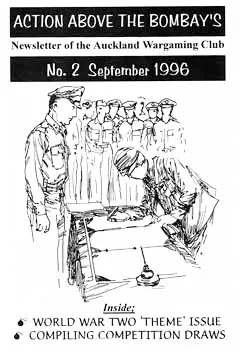All to often we play games with little thought about victory conditions, usually just to shoot ’em up and she’ll be right! However with a little effort and time before each game it can be given much greater depth, and consequently be more challenging and interesting to the participants. I would like to suggest some ideas for how this can be done.
Many wargamers play their games in isolation with little “purpose” behind them, the recent suggestion that a gamer’s tactics would change if their opponent got to ‘hit’ each element they lost with a heavy hammer is all too true, and it is this ‘strategic’ purpose that is lacking (we would all be very cautious if playing with the above rule)! The ideal situation to impose this ‘purpose’ is the campaign, this always puts an all new perspective to things, the opponents in a battle may not have the same objective for instance. Unfortunately 99% of the time we do not have the luxury of participating in campaigns (which is a pity) and so we need some way of creating these constraints artificially, one system I have come across is in one of my many rulebooks; “Washington’s Wars”. These rules were designed for French & Indian war action and the American Revolution, disappointingly the rule mechanics and effects on the table did not match the impressive packaging! The rules did however include one good idea about victory conditions and it is a variation of this that I will present below.
The system requires that the players nominate certain strategic or tactical geographical features, these may be road intersections, towns, hills, bridges, etc… There must be at least 4 of these, and the opponents must agree on them. Each player then secretly records the ‘value’ of each of these, nominating any value between 5 and 25 points, and not disclosing this value to each other. They also record two more victory features (which the opponent is not made aware of) and assign these a value between 0 and 10 points. Each player must end with a total of exactly 80 points spread between 6 (or more) features, of which his opponent is unaware of the location of two of them and the value of all of them. The beauty of this system is that the Hill I have made worth 25 points and therefore of major significance might only be worth 5 points to my opponent and hence of little importance!
At the end of the battle ownership of features is decided by who is occupying them, or who was last to pass through/over them (Any army that is completely destroyed loses all terrain points and their opponent automatically scores the maximum 80). Furthermore each player quickly tallies their ratio of casualties/losses and rounds down to the closest 10% (i.e. 25% losses = 20%). He scores 1 point for every 10% casualties the enemy have suffered, and 1 point for every 10% of his army that weren’t casualties. This gives a maximum possible score of 100. In games where unequal forces are used the winner must score a ratio of points equal to or greater than the ratio of force points. (For example a 200 point army fights a 400 point army, the smaller army scores 25 victory points, the larger army 40 VPs. The smaller army would win because it was ½ the size of the larger army and it scored ½ or more points than the larger one. Conversely the larger army would have to score at least double the points of the smaller to win).
As a further suggestion rules that do not limit the number of turns should perhaps have some sort of limit imposed. As a guideline I would suggest throwing 5d6 (for games like Spearhead) or perhaps 2d6+3 (for Ancient period games such as DBM) to determine the number of turns remaining before nightfall. The reason for this is to instil a sense of urgency and purpose into the participants. Well I hope that you find these ideas of use, or at least that they get you thinking on the subject.
Happy gaming.
by John Moher – AATB No.2 September 1996.

